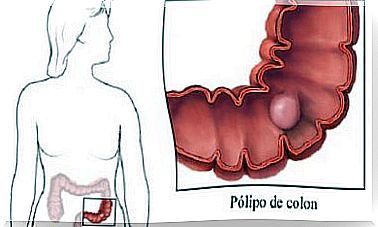Walking After Meals Helps Prevent Type 2 Diabetes

Type 2 diabetes is one of the most common illnesses around, and today we’re going to talk about how walking after meals can help prevent it. This disease not only implies a change of life for the patients, but also an obvious risk of developing other medical complications, such as various cardiovascular diseases.
According to the Revista Española de Cardiología, this disease is almost epidemic in many regions of the world. Likewise, we can say that the Western way of life undoubtedly increases the risk of developing it.
We must also remember that diabetes is often asymptomatic. So much so that some people are mistaken to think that just because they are thin they don’t run the risk of developing it. Three factors must be taken into account to avoid diabetes:
- Get regular medical appointments.
- Live a healthy life.
- Assess a possible genetic predisposition.
Also, if you’re already suffering from this condition, you’ll be glad to know this: something as simple as walking after meals can help improve your sugar levels. You don’t need to run a marathon; in fact, 10 minutes is enough.
Walking after meals to prevent diabetes

This study was carried out at the University of Otago (New Zealand) and published in the journal Diabetologia . In this work, something that was already felt was confirmed.
Walking after meals reduces glucose levels by up to 12%. If we get used to leaving the house to exercise our body for a little more than 8 or 10 minutes after breakfast, lunch and dinner, he will thank us.
Taking several short walks is better than taking one long walk
These data are relevant. We know we’ve already talked on our website about how healthy it is to walk half an hour a day. In case of type 2 diabetes, it is necessary to approach this strategy in another way.
In the study by the University of Otago, it was shown that people who walked 10 minutes after each meal were able to stabilize their glucose much more than those who walked only once a half hour.
If you have diabetes, go for a walk
The data from that work also revealed something remarkable. The time of day when your glucose level decreases most is after dinner. That’s when we tend to consume more carbohydrates and, in general, people tend to be less active.
On the other hand, something we should be clear about is this: we shouldn’t get tired. It is better to have a constant but short weekly exercise spread over 3 times a day than to focus on a single effort.
After dinner we can, for example, take the opportunity to walk the dog. If your family also has someone with diabetes or you have a friend with the same disease, there’s nothing better than taking a walk around the neighborhood before returning home and resting with a good shower.
150 minutes of exercise a week
The important thing, without a doubt, is to be constant. It won’t do any good to start today with this purpose, forget tomorrow and take advantage of Sunday to have an intense session to try to make up for the lost day.
Something like that would be counterproductive. Regular, moderate physical activity is a reliable and effective way to lower blood glucose levels in type 2 diabetes. The advice of those in charge of this work is to do 150 minutes of moderate aerobic activity per week.
We have to distribute it at 2 or 3 times a day. In total, they should add up to between 20 or 30 minutes a day. It’s interesting to ride a bike, exercise at home, go dancing and, of course, walk fast.
Is this strategy also recommended for children?

The answer is yes. Everyone with type 2 diabetes should do aerobic exercise in short sets. Performing an anaerobic exercise, such as push-ups or a very intense run, can cause certain decompensations that are not recommended.
The ideal is light exercise that activates the heart and does not last for half an hour. Riding a bicycle or playing football for an hour can cause hypoglycemia.
So don’t hesitate: let the kids skate, ride a bike, walk, play, walk happily with life, but without getting tired. We all benefit from moderate but consistent exercise.








